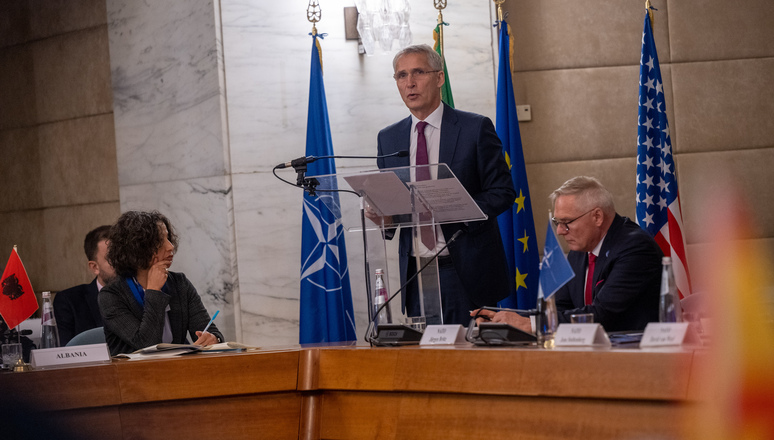NATO Secretary General Jens Stoltenberg cautioned on August 1 that cyberattacks today can cause damage equivalent to traditional military strikes. He emphasized the need for collective cyber defense across alliance members. (Reuters)
Speaking at the Brussels summit, Stoltenberg called for increased investment in AI-enabled cybersecurity tools, cross-border threat intelligence, and mechanisms to coordinate rapid response to ransomware or supply-chain compromises. (Reuters; Financial Times)
Cybersecurity Defined as Strategic Priority
NATO’s new Strategic Concept positions cyber threats alongside conventional, nuclear, and hybrid warfare. The document includes a commitment to explore offensive cyber capabilities under updated Article 5 interpretations. (Reuters; Financial Times)
Alliance members agreed to conduct annual cyber response exercises and improve information sharing on state and criminal cyber campaigns. (Cybersecurity News)
AI and Critical Infrastructure Protection
Stoltenberg advised partners to develop AI-powered security tools to detect anomalies in industrial control systems, telecom networks, and energy grids. The objective is to preempt attacks targeting civilian infrastructure. (Financial Times)
Both private sector and government agencies were encouraged to share cyber-risks in critical sectors, supported by funding for cross-border AI threat detection. (EU Digital Strategy)
Context: Rising Cyber Attacks and Geopolitical Risks
This announcement follows a wave of recent state-linked ransomware and supply chain hacks targeting infrastructure in Europe and North America. Experts warn these campaigns may be intended as precedents for future kinetic engagement. (The Verge)
NATO previously approved its first Cyber Defence Pledge in 2016. This year’s summit deepens the institutional alignment between cyber readiness and military deterrence. (NATO official release)
Why This Matters for Members and Allies
NATO’s stronger posture may spur defense procurement in AI-launched cybersecurity tools among members. Analysts predict increased demand for firms offering cross‑border anomaly detection and incident orchestration platforms. (TechCrunch)
Member states must now align national cyber security laws and data sharing protocols under unified AI-augmented systems. Implementation timelines could become binding within 18 months. (Financial Times)
Sources: Reuters (Stoltenberg cyber warning), Financial Times (summit coverage), Cybersecurity News (exercise detail), EU Digital Strategy (AI‑powered protection), The Verge (geopolitical cyber trends), NATO official release (Cyber Pledge), TechCrunch (industry response)




